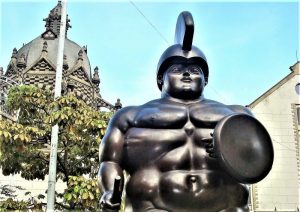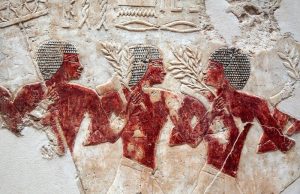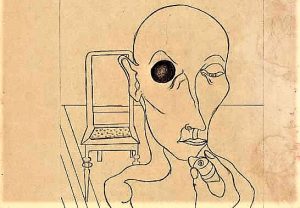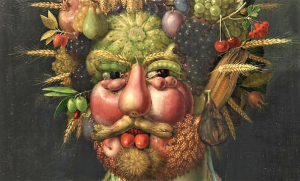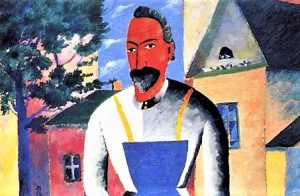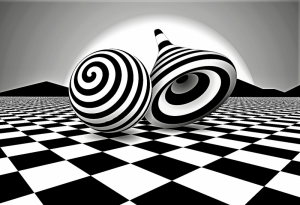Raphael Sanzio
Raphael Sanzio, better known as Raffaello or Raffaello Santi, is an emblematic Italian painter and architect of the High Renaissance period. In addition, this important artist was the son of Giovanni Santi, who was an important painter and official poet of Frederick III of Montefeltro court, one of the most famous princes and protector of the Renaissance arts in Italy.
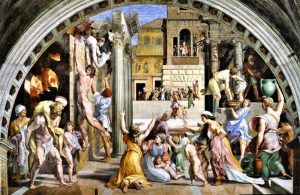
Personal information
- When he was born: 06/04/1483
- When he died: 06/04/1520
- Nationality: Italian
Who was Raphael Sanzio?
Raffaello or Raphael Sanzio, was an Italian referent of the Renaissance, considered one of the greatest and most influential painters. He is known as "the prince of painters". He received his first art training from his father, the painter Giovanni Santi; he studied Michelangelo and Da Vinci, from whom he acquired his formal virtuosity, as well as the ability to synthesize religious scenes; seeking a balanced representation of a subtle beauty based on its compositional character.
Raphael Sanzio biography
Raphael Sanzio was born on April 6, 1483, in Urbino, Italy, which is why he can be known as: “Raphael of Urbino”. He was a descendant of the painter and poet Juan Sanzio. From this affinity, his interest in arts was born and his father became his first teacher.
He was influenced by both Leonardo da Vinci and Michelangelo after moving to Florence in 1504. From this pair of virtuosos, the handling of his pictorial technique evolves from some compositions and portraits. But it was not until 1508 that he managed to establish himself in Rome, where his genius flourished, and his art took its most significant expression.
Upon his arrival in the capital of the Christian world, he began to be hired by popes and bishops to decorate the halls and chapels of the Vatican. He created countless paintings, portraits, mural frescoes, sculptures and architectural works, demonstrating his masterful execution. An example of his work is “The School of Athens”, one of the most representative of his virtuosity and which rooms are located in the Vatican.
Twelve years later, on the same day as his birthday, April 6, 1520, at the age of 37, he died in the city of Rome where he lived. His death causes an irremediable loss for art, since it leaves one of the most significant paintings unfinished: “The Transfiguration”.
Characteristics of Raphael Sanzio’s work
Raphael Sanzio’s work faithfully reflects the character of the period, as it is influenced by Michelangelo and Leonardo Da Vinci, precursors of Renaissance. Unfortunately, he dies young and even so, he manages to be a great exponent of this artistic boom, specifically from the High Renaissance, between the 15th century and the beginning of the 16th century.
Among the plastic elements that can be defined in his pieces, the compositional clarity stands out since the triangular-pyramidal scheme can be observed at first glance when representing his scenes. He is concerned about the space within the painting, which leads him to create an environment that encompasses all the figures that are among themselves, taking the perspective theme to another level in each of his scenes, evoking delicacy in the quality of the stroke.
The painter’s approach to religious themes is simple to note, narrative or sequential in nature, depicting scenes from Gospel texts, contemplating the figure of Christ, apostles, disciples and magical religious figures. It is a direct and strong approach to the time’ s cosmovision.
Artworks by Raphael Sanzio
The proper analysis of his works can be divided into four periods, in which his stay in Florence stands out. His first years in Perudia (1494-1500); the Umbria period (1500-1504), the Florentine period (1504-1508) and his twelve-year period in Rome.
During his time in Perufia, together with Perugino he acquires clear tonalities, elegant postures, idyllic landscapes. Then in Umbria he deepened his studies of perspective, a constant preoccupation in the artistic media of the time. The pieces that stand out are: The Adoration of the Magi, Louvre Museum, the Adoration of the Shepherds, National Gallery of London and The Martyrdom of San Sebastian (1498).
In Sanzio’s career, Florentine period (1504) stands out, where he was influenced by Da Vinci, Michelangelo and Fray Bartolomeo, learning their methods of light plasmation, shadows, anatomical studies and dramatic composition of the characters. From this stylistic change, his numerous Madonnas and Virgins are appreciated; the triangular or pyramidal compositional scheme, achieving a serene character in his pieces.
 Examples of this are: the Madonna of the Granduca, at the Pitti Palace in Florence and The Beautiful Gardener, at the Louvre Museum. On the other hand, the most original composition in this period is The Burial of Christ of 1507 which is located in the Borghese Gallery in Rome and is part of an altarpiece. This work shows Michelangelo’s strong influence on the disposition and attitudes of bodies and their anatomical treatment.
Examples of this are: the Madonna of the Granduca, at the Pitti Palace in Florence and The Beautiful Gardener, at the Louvre Museum. On the other hand, the most original composition in this period is The Burial of Christ of 1507 which is located in the Borghese Gallery in Rome and is part of an altarpiece. This work shows Michelangelo’s strong influence on the disposition and attitudes of bodies and their anatomical treatment.
Due to his fame as a Renaissance representative, he travelled to Rome in 1508, invited by Pope Julius II, for the fresco decoration of four rooms that later became the history of universal art, the Vatican rooms. The following stand out: the First Stanza of the Signature: Dispute of the Sacrament, School of Athens, the Parnassus, the Second Stanza of Heliodorus: Mass of Bolsena, the Third Fire Stanza of Borgo and Dream of Constantine. He died in 1520, leaving the Transfiguration unfinished.
The School of Athens
The creation of this representative painting begins with the realization of sketches between 1509 and 1510, to be finished between 1510 and 1512. It was an order of Pope Julius II with decorative character of the Stanza della Segnatura. The fresco evokes the philosophy of the time as it captures an astonishing daily scene with great thinkers, in this case Aristotle and Plato, in the middle of the Athens School and gathered with their group of philosophers around significant sculptures by Athena and Apollo.
From the plastic point of view and as a worthy exponent of Renaissance period, the handling of the composition stands out, as it envelops or frames in a certain way the characters and architectural elements, such as the columns and arches that lead to an open gallery where philosophers converge in the background, emphasizing Aristotle and Plato at its center and thereby highlighting the perspective and depth that the work acquires.
It constitutes a globalized version of what was known as the 7 arts, grammar, arithmetic, music, geometry, astronomy, rhetoric and dialectics.
A curious fact about this work is that there is a reproduction of it in the auditorium of Old Cabell Hall at Virginia University and another in the cathedral of Königsberg, Kaliningrad.
The Transfiguration
In 1517, Raphael Sanzio was commissioned by Cardinal Julio de Médicis (later Pope Clement VII) to produce a piece for the cathedral of Narbonne. The scene portrayed narrates two Gospel episodes: the act of transfiguration on Mount Tabor, and the vain attempt by the apostles to relieve a possessed child, who is finally healed by Christ, who comes down from the mountain. Sanzio manages to surpass the requirement required for the union of these two scenes, where it is not a miracle, but the inability to perform one.
In 1520, with Raphael Sanzio’s death, the painting remains incomplete. Currently, the artwork is conserved in the Vatican Museum.
How to cite this article?
Briceño V., Gabriela. (2019). Raphael Sanzio. Recovered on 24 February, 2024, de Euston96: https://www.euston96.com/en/raphael-sanzio/



